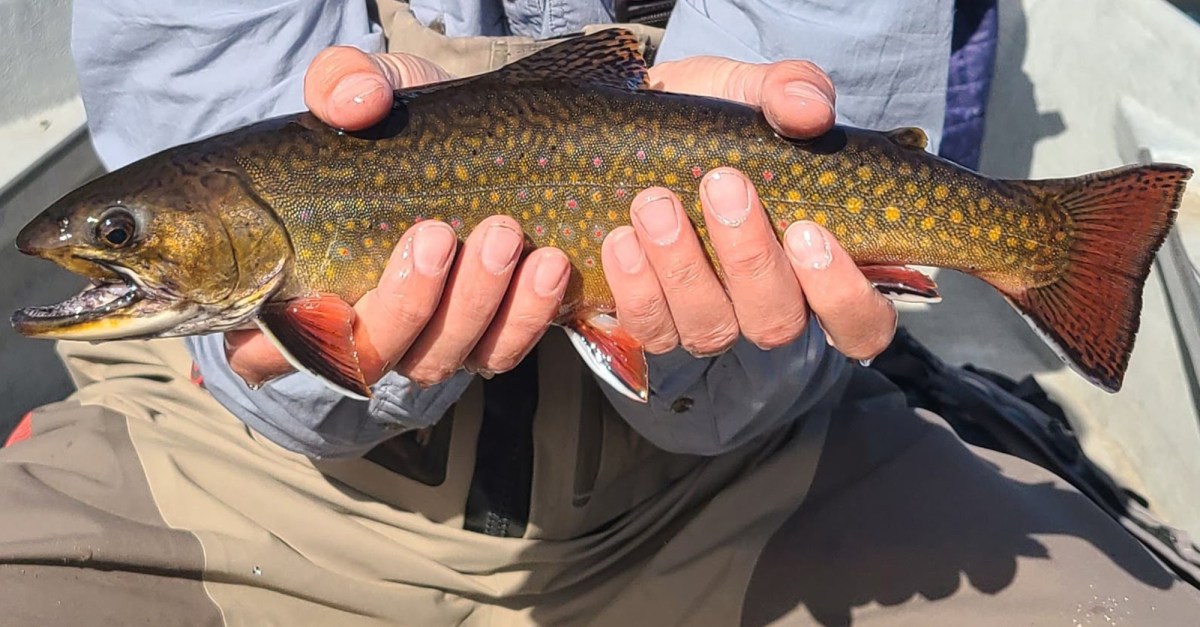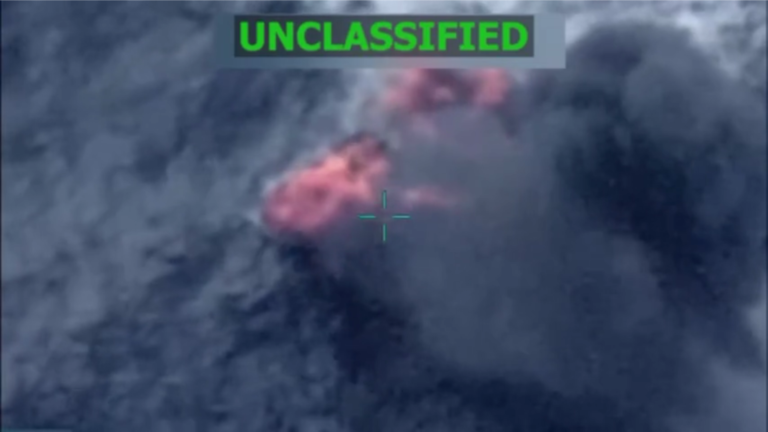I Shot the Only Elk I Saw in Montana

Elk hunting has always been romanticized for us Easterners. As a kid growing up in Pennsylvania I remember watching hundreds of different elk hunts on the Outdoor Channel that were full of screaming bulls and scenic backdrops. Sitting in my parent’s basement, I’d wonder what it would feel like to be the one behind the bow.
An elk hunt offers one of the highest degrees of difficulty for archery hunters. Not only do you have to make a good shot, but you have to be fit both physically and mentally. That challenge of a DIY archery elk on public land in the West is exactly what I craved. I wanted to prove to myself that I was capable of accomplishing something that felt out of reach when I was a child.
Now, many years later, I can tell you exactly what it feels like.
A Tag to Take on the West
This spring I, like many others, spent a small fortune applying for tags out West. I threw my hat in the ring for New Mexico, Wyoming, Colorado, and Montana, and even struck out on the Idaho queue. As spring waned on, my inbox slowly filled with the expected emails informing me that I did not draw.
Then to my complete and utter shock, I received an email from Montana FWP informing me that I was successful in drawing a general elk tag. Stunned, I picked up my phone and called my best friend and elk hunting partner, Lou Mocniak, to inform him that we’d be headed to Montana in September. Lou has a lot more elk hunting experience than I do, and we’d made a pact years ago that we’d be there for each other’s first archery elk. After a bust in Colorado the year prior, we were ready to try our luck in Montana.
The next few months were filled with long phone calls, e-scouting, and discussing different units, basins, and even specific creek branches. By the time late August rolled around, I had more pins on onX than we’d be able to hit in a lifetime. Long mornings running, rucking, lifting weights, and lots of time shooting arrows in the driveway were all coming to a head as September loomed. With the September 6 opener just days away, we finally decided where we would start our hunt. We were headed for North Central Montana.
Three Days of Bad Decisions
After a 34-hour drive across the country, we had finally arrived at the trailhead. The Middle Fork of the Flathead River greeted us with a dull gurgle as we crossed and took our first steps into the Great Bear Wilderness. The basin we were aiming to reach was 15 miles in, so we spent much of our time the first day hiking well maintained trails along the East side of the river. Our plan was to reach a peak near that basin, and essentially run a loop from there back along the ridge to West side of the river back to the trailhead checking for elk sign. That night, we set up camp 11 miles from the trailhead, in a spot that looked exactly like the Montana I had imagined.
The next morning, we hiked a few more miles without much elevation gain before we started our ascent to the edge of the basin we’d e-scouted so intently. Several hours later and after 2,600 feet of elevation, we’d reached the peak that would allow us to glass the Northern face of the basin to our South. To our disappointment, there wasn’t hide nor hair of an elk. After an hour or so of glassing, calling, and listening, we hastily decided to continue on with our initial plan.
Rather than follow the same trail back down, we thought it made more sense to go off-trail and search for fresh sign in the basin to our north. According to our digital maps we had downloaded, the closest basin looked like a thick spruce forest with a few springs producing creek arms at different benches along the slope. The reality, however, was much different.
As we began down the north face of the basin, we found some fairly fresh elk beds and droppings. Excited at the prospect of being around a herd, we slowly picked our way downhill to the closest water source on the map. As we went, the terrain got steeper, and the cover began to turn from thick spruce to a mix of spruce, alder, and devil’s club. The trail we were following began to transition from a well-used path to more of a general recommendation that some critter had made its way through within the last year or so. Then, suddenly, we slid down the hillside about 80 yards and found ourselves in an alder choked avalanche chute with no way out but down.
“One step in front of the other,” Lou continued to say as we climbed up, over, and through the horrendously thick alders.
As the hours slowly ticked by and afternoon began to turn to evening, I stopped to catch my breath and said what both of us were thinking, “Man, we’ve got to get out of here, and soon.”
With the looming threat of grizzly bears in the area and a waning light, a twinge of panic began to set in. We were both pushing through the gnarled mass of branches with every ounce of energy we had left, but still, not making progress fast enough.
“Only 500 yards left to the bottom,” Lou said, exasperated.
I knew at this point we were in trouble. We had less than an hour until we were out of daylight. The last time we’d eaten was at the peak, hours ago, and we were burning calories all afternoon.
Finally, as the sky turned from blue to gray, we’d reached the bottom and found a creek to stop and refill our water. In the descent, I’d lost two arrows, ripped the left leg of my pants on deadfall, and had more small cuts and bruises than I could count. Lou was looking pretty rough too, with cuts, bruises, and branches with leaves still attached sticking from his shirt and pack.
As we drank and caught our breath, we decided there simply wasn’t enough sign in the area to keep searching up to the next peak and beyond. It would be smarter to use the truck to cover ground, rather than our feet at this point. While I was a little bummed to leave the area we had spent so much time scouting, I agreed. We hadn’t heard or seen anything to convince us elk were nearby.
“Just 200 yards uphill to the trail, then we can flick on some headlamps and beat feet back to the truck,” Lou said, a flicker of hope in his voice.
When we reached the trail, our hopes were dashed. It was entirely unmaintained and covered with alders and small spruce. It would be a challenge during the day, but all but impassable for us at night. Frustrated, we tried to make our way along the trail, but after just 50 yards, Lou stopped, looked at me and said, “We’re only going to make a bad situation worse if we keep going.”
I knew he was right. We were about to spend the night in the best looking bear habitat I could have imagined. Quickly, we found a small spruce nearby that had a clearing big enough for the both of us to sit back to back on the ground. We reluctantly agreed that eating food was off the table, as the scent might attract a bear. The area was so thick we couldn’t set up our tents either; there simply wasn’t a big enough opening. So, we nestled into our small 4 foot by 3 foot outcropping and without saying a word, both chambered a round in our handguns.
With no food, minimal shelter, and physical exhaustion setting in, the mood was sour.
Suddenly, we both shot up catching our breath. An hour had passed and unknowingly, we both had fallen asleep from exhaustion.
“I thought you were taking first watch,” Lou whispered, joking.
“That was most certainly not agreed to,” I replied.
From that moment forward, we both sat in the stillness of night for hours, unable to coax our minds back to sleep. By 2 a.m., all we could hear was the babbling creek down the hill and our stomachs grumbling in protest. At 4 a.m., it started raining. By daybreak, we were soaked, hungry, and exhausted.
As we began the painstaking journey toward the trailhead, our boots began to squish with water dripping down from our pants and soaking our socks. The alders seemed endless at this point, and while no words were said, we both knew we just had to keep moving. About a mile from “camp,” we came into a clearing that offered a brief reprieve from the bushwhacking. As we squished our way through the fescue, a stick snapped on the edge of the clearing.
We both paused, and I looked up to see a grizzly 40 yards away and staring right back at me.
“Buh… buh.. Bear!” I sputtered to Lou who was a few yards to my right and unable to see the light brown mass hidden among the trees.
We both drew our handguns and started hollering at the sow.
“Hey bear! Go on and get out of here bear!”
But rather than run, she circled downwind and began creeping toward us, just 30 yards away now. Then, Lou fired a warning shot to his side, and as quickly as she had appeared, she turned and fled the scene.
I’m not sure whether it was exhaustion or hopelessness, but neither of us really showed any signs of adrenaline after the encounter. We simply put our handguns in their holsters and started marching again, as if it were just another day in the woods.
Thankfully, the following hours of hiking remained uneventful, and miraculously, that afternoon we reached the trailhead and collapsed at the truck, thankful to be out of the wilderness. After some hot food and cold drinks from the cooler, we loaded up and headed to the next spot on the map.
Spot Hopping Elevation Bands
The next two days were much less exciting. We jumped from trailhead to trailhead as we made our way South toward Central Montana. We covered a lot of ground with the game plan of checking basins at different elevations. We started low, in a flat top area that supposedly had some ponds nearby that could make for some lovely wallows. But, due to drought, they were bone dry.
One location we visited shortly did have some fresh elk sign, but it seemed like a small group of elk. After calling that evening with no response, we decided to keep moving and covering ground. As avid turkey hunters, we took the approach of chasing spring gobblers. We knew that somewhere in the state of Montana, a bull elk was bugling. We simply had to find out where.
After two days of unsuccessfully checking off spot after spot, we got back to the truck feeling like we needed a new plan. We spent five days hiking around the hills and mountains and had yet to lay eyes on an elk. That night, we drove to a nearby town to get cell service and I pulled out my laptop to e-scout higher elevations. Using onX Hunt’s new Terrain X feature, I was able to set an elevation band to show me what areas we could focus on next.
We settled on a basin 4 hours away and began our drive. At 2 a.m., we finally arrived and quickly set up camp next to the truck.
The Lone Bull
The 6 a.m. alarm went off far too quickly. As I groaned and scrambled my way out of the tent, Lou emerged looking quite a bit worse for wear. We were both exhausted.
To this point, we had covered 61 miles on foot, gained and lost thousands of feet of elevation, and our bodies were beginning to protest. But, as Lou put it while we griped, “that’s elk hunting.”
I fired up thee JetBoil to get some instant coffee rolling as the sky barely began to show signs of daybreak. Minutes later, sitting on the tailgate drinking coffee and feeling pretty dejected, I tried to rally.
“There’s got to be one here, we just have to keep after it and an opportunity will present itself.”
“I really freaking hope so,” Lou muttered back.
As I took the final sip of coffee, I jumped off the tailgate and grabbed my gear. I smacked Lou on his hindquarter and said, “Welp, there’s no time like the present.”
We set off from the truck at the head of the basin, heading gradually uphill toward some highland lakes that looked big enough to hold water, even with the current drought conditions. There weren’t going to be any long hikes today, just a short 2.5 mile jaunt to the water where we would look for sign and a place to sit down and wait out some elk. We couldn’t have hiked 10 miles today if we’d had to.
About a mile from the truck, Lou pulled out his bugle tube and ripped off a pitchy location bugle. Something he’d done dozens of times thus far into the trip to no avail. But this time, as if God himself had heard our prayers, a reply came ripping down the mountainside to our East, about a mile away.
I turned to Lou, bewildered by what I had just heard and he began fist pumping in the air.
“No way dude,” I said, immediately concerned it could be another hunter bugling on the ridge above us.
But Lou was much more hopeful. We quickly backtracked to get a clear view of the mountainside and close the gap in case it was a real bull.
About 500 yards from the creek at the base of the mountainside, Lou let out another location bugle and the bull immediately fired back. Closer now, moving down the mountainside from where we’d originally guessed.
We checked our maps and found a meadow about halfway down the mountain. We guessed he was headed right for it. We gathered ourselves and kept moving toward the creek. As we approached the creek, the morning coffee hit me like a freight train.
“This is terrible timing, but I’ve got to take care of this.”
He laughed, and said, “better make it quick.”
I found a good spot and was about 20 seconds in when the bull decided it was time for me to wrap things up. Directly uphill, near the top of the meadow just hundreds of yards away, he let out an angry, guttural bugle and chuckle that sent shivers down my spine. As quickly as I could, I finished my business and grabbed my bow.
We hopped the creek and began a windsprint directly uphill. The thermals were pulling down for the time being, but as the sun got higher and higher, we knew our window was closing. Out of breath, we reached the edge of the meadow. I nocked an arrow as Lou dropped back to call.
I slipped into the meadow and set up directly in front of a large spruce, with two small spruce trees a few yards in front of me. I had a “V” shaped shooting lane and plenty of cover. Ranging some trees and stumps, I felt a calm come over me. I was in position. Now we just needed an opportunity.
Lou began raking the trees behind me, causing quite a ruckus. He let out a chuckle, and kept raking. He was winding down when I heard a loud snap directly uphill.
I peered through the spruce and caught a flash of movement just 30 yards away. It was far too thick to see what it was, but my heart began to pound.
Another flash of movement, headed to the right, confirmed that I needed to take a small step in order to open up shooting lane. I grabbed my rangefinder and pinged a spruce 19 yards away. While reading the range, antlers came into view, just beyond the spruce. I quickly tapped my rangefinder on the bulls head as he emerged, 21.5 yards away.
Dropping my rangefinder, I grabbed my release and drew as the bull stepped into the wide open, barely quartered to me. Since he was walking, I let out a cow call to stop him.
“Meewgh,” was what I mustered.
Admittedly, it sounded more like a choking duck than a cow elk, but Lou quickly salvaged the moment with a cow call down the hill. The bull stopped, looked past me, and I settled the pin on the crease of his shoulder. As I squeezed through, time stood still. The arrow released and I watched my green Lumenok disappear right where I had aimed.
The bull wheeled, tearing through the fescue and bounded uphill. I could see the exit was perfect as he disappeared behind the spruce trees. I hit my knees, dropped my bow, and grabbed my head, turning to Lou who was sprinting uphill at me throwing his bugle tube to the sky.
Tackling me to the ground, the elation was indescribable. Moments later, we heard a thunderous crash just 50 yards uphill. The bull hadn’t gone anywhere. In the moments that followed, tears rolled down my face. This had been the toughest hunt of my life, and up to this point, one of the most frustrating. I knew the odds were always stacked against us — nonresident archery elk hunters in Montana typically see a low overall success rate, with percentages often falling within single digits. But through it all I had held on to the belief that we would succeed if we just tried hard enough. And now that we had, in fact succeeded, I was overcome.
Say what you will about us Easterners trying to bow hunt elk, but let the record show that at least some of us will never give up. That feeling, that celebration, and that moment on the side of the mountain will be with me until my dying breath.
Read the full article here









